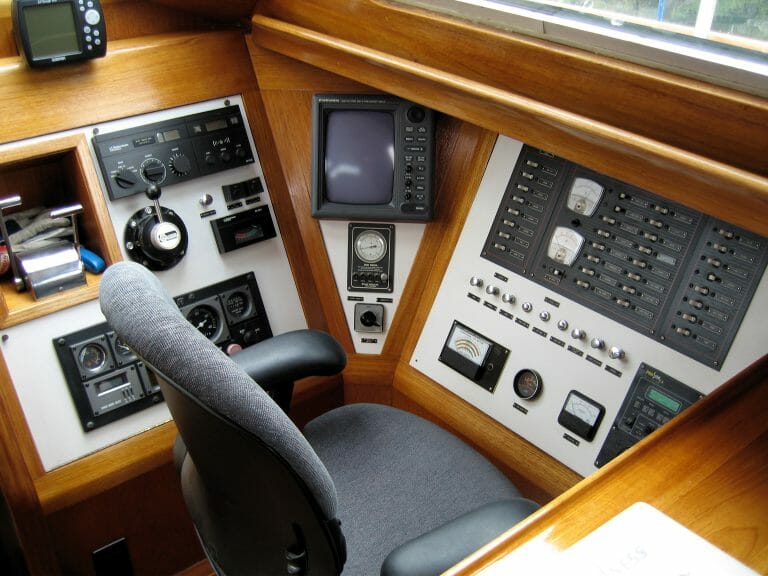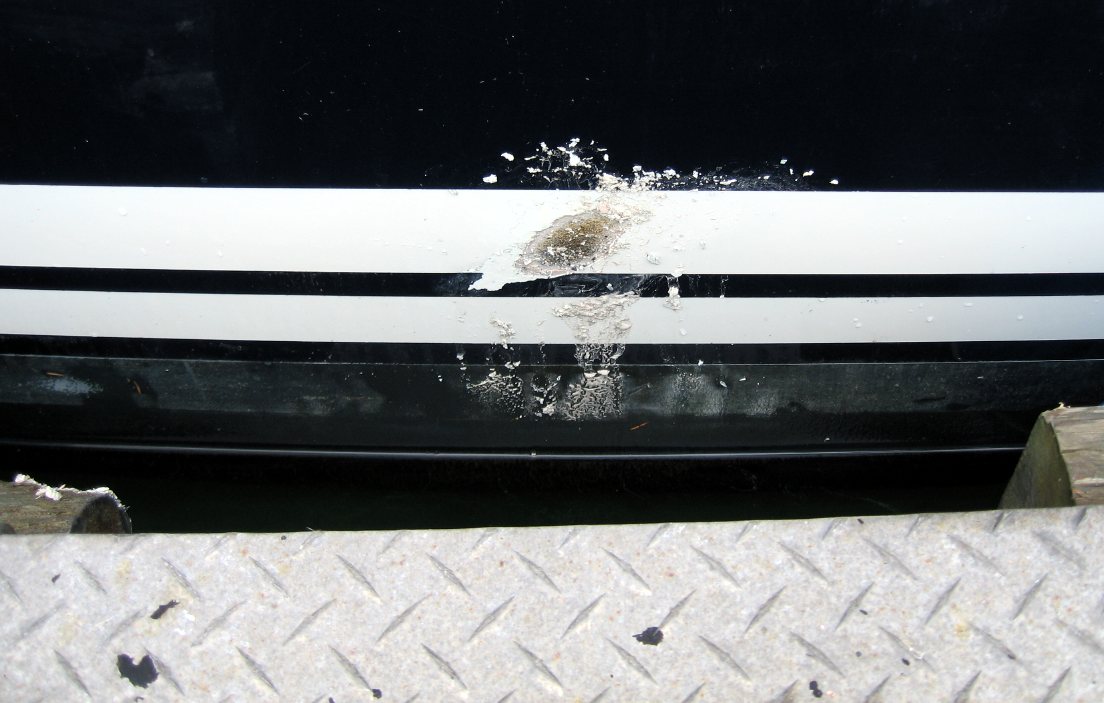
Layers of Information
Update: I have added a live tracker to the ship in addition to the datalogger that has been recording detailed routes. You can now see our current location, updated every 90 seconds while underway. Sometimes the transmitted position reports don’t make it due to heavy traffic on the APRS channel, or we may be out of range of a shore station, but during the initial tests it worked beautifully. More tech details on this later – just wanted to add the link.
Anyway…
We’ve completed the minor loop to Anacortes, driven by the meeting with the thruster folk, but the journey was richer in texture than might be expected for such a specific technical quest. Enroute north, we stopped for a day in Cornet Bay… the ideal place to pause and take a breath before plunging through Deception Pass. That’s one of the rites of passage for a Northwest sailor, and though it’s reasonably uneventful at slack, it does take careful planning. Flood and ebb through the narrow rocky passage can run 8 knots of swirling whitewater, and YouTube is rife with videos of boats doing, shall we say, not so well.
This can be exacerbated by gale-force winds from the Strait of Juan de Fuca (which have been happening a fair bit lately), so we just paused a day, went for a long hike in the woods of Hoypus point, luxuriated in a 50-cent state-park shower, rowed over to meet Tim Flanagan of Navagear aboard Two Lucky Fish, kept an eye on NOAA and Mr. Tides, then calmly went for it. Other than getting buffeted sideways a bit, it was smooth… and we emerged into relatively open water and continued through Burrows Bay and around Shannon Point toward Anacortes with only one ferry-dance to quicken the heartbeat (I ended up doing a loop to escape the developing collision course, though another sailor stupidly insisted on holding his own and got a nasty blast of the horn as the behemoth implacably turned across his bow and forced an untidy evasive maneuver well inside the legal proximity limit.)
After a brief provocative glimpse of the BMW/Oracle 90-foot trimaran (I couldn’t catch her), we landed at Cap Sante Marine, which kindly let us use their dock for a couple of nights while another storm system passed. Unfortunately, one of our fenders got gobbled by a big diamond-plate-covered gap overnight, whereupon the 25-30 knot wind ground us steadily on a wooden beam as we snoozed happily. The good news is that my hull is steel, and although an ugly bare spot was already rusting by morning coffee, we didn’t have to contemplate the emergency structural patch that would likely have been required with a fiberglass boat. But still. This really sucks, and it is going to be expensive to bring the Awlgrip back to a smooth uniform gloss:
The irony, so to speak, of this happening at a boatyard was not lost on us. Alas, there’s no blame but our own… there should have been more fenders out to protect us from the ragged dock with large gaposis, and when the wind came up we should have popped out of the hatch to check on things.
The thruster meeting went well, however, and we’ll probably return in October to get an 8-inch hole drilled through the boat below waterline. That thought should make any sailor cringe, and coupled with the trauma of haulout I’ll probably approach it the way my stockbroker handles the current investment climate: “gin and xanax.” Once done, I will have 213 pounds of lateral thrust at the bow, just a touch of the joystick away. That should make close-in maneuvering less traumatic.
Friends Afloat
The escape from Anacortes was on a day of howling wind and intermittent rain, continuing this Pacific Northwest summer-from-hell that has seen only a few short sunny stretches. We were joined by two of my dearest friends, and motored down through Swinomish Channel (past the marina that held us captive last winter) and out into open water for a bit of sailing before tying up to wait out the Labor Day frenzy that renders all nearby anchorages and marinas zoo-like. Time on water with people I love… now this makes all the hard work worthwhile:
This might be a good time to mention something that really needs a proper web page of its own, and soon. The community aspect of sailing is one of the most alluring parts of all this, and we are seriously working to rekindle the “technomadic flotilla” idea that has been threading through my projects since the early ’90s and almost materialized in the Microship era. We are envisioning a mobile tribe of boats bearing kindred spirits, practitioners of skills various, geeks of many stripes, and a core that remains constant and hostel-like, even through a slow turnover of participants.
Sky and I are both coming at this from different but overlapping perspectives. She sees it as a wandering group of actors, writers, artists, and musicians (which we have dubbed Dramanauts, hence her blog by that name). I see it more as a self-sufficient technomadic community that has reached a critical mass of skills and tools, and is thus able to respond to changing world situations (or pure whim) by relocating on a global scale. The two notions are quite compatible, and reflect our own passions.
If you’re interested, let me know. We’ll be writing much more about this soon.
Reverse Engineering and Ship Documentation
Meanwhile, I sit here on the boat as it rocks and creaks in the relentless late-August winds (?), piecing together a data structure that addresses a huge problem: getting a handle on the complexity of this system. The boat came with a few old drawings that were made before numerous changes, and even those are incomplete. One of the first projects, before even getting too deep into my own, is to figure out what is here… and yet, if I take that to fruition, I won’t have time to add the essential systems and upgrades that are waiting in the wings.
It’s a mess, in other words, and attempts to make new drawings have been mostly frustrated by variations in granularity or encapsulation that render it hard to know where to begin… or when to stop.
I finally hit on a solution, which I am implementing now in Filemaker 9 relational database software. Every object on the boat (something that one would actually think of as a physical entity, not internal parts or vague systems) has a corresponding database record… and this contains all relevant documentation including PDF and web files, serial number, power, location, commentary, spares, and so on. Basically, it’s an inventory, with each item having an auto-assigned numeric ID.
A second table has one record per connection, and that can take any form from a cable to a piece of plumbing. The record identifies the involved objects, and also carries descriptive text along with a “short name” that matches the output of my labelmaker. Each connection also has a unique ID.
Portals inside each of these layouts reveal the magic. An object like a GPS would reveal perhaps three lines in a table, one for each connection that enumerates it: power, NMEA 0183 for serial data, and a drop from the NMEA 2000 backbone that links it to the main nav systems. At the same time, I could pop over to the record for that serial cable and see two lines in its portal: the GPS and the 0183-to-USB dongle that interfaces it to my Mac.
The elegance of this is the separation between objects and connections, allowing things other than one-to-one relationships. Other files in the same system provide reference to the DC distribution system (what’s on this “INSTR” breaker?), the crossbar and configuration management tools owned by a dedicated microcontroller, maintenance history, and so on.
Doing it this way is incremental and thus non-intimidating, it’s easy to edit, and it associates all the relevant information with each device… rather than my current protocol, if you can call it that, consisting of a huge filesystem of randomly named PDFs, web locations, text files, paper manuals, sketches somewhere in the notebooks, and my increasingly flawed and Google-dependent memory.
This is coming together well enough that I’ll probably publish the technique when it’s done enough to test properly… and in the meantime it’s helping me get a handle on just what I have here.
Fair winds,
Steve





Hello Steve,
Thanks for the blog — I enjoy reading about and learn much from your Nomadness experiences. If ever in Shilshole or Elliot Bay, give a shout. I would be pleased to come by from West Seattle and meet up for a chat. Of, perhaps we could talk via K7PP or WW7RA repeaters? Fair winds!
Jonathan, KK7PW
Definitely, Jonathan! I looked at your designtrek website and it sounds like we would have much to discuss.
I’m trackable now at findu, by the way – just added an Rtrak.
Cheers and best 73!
Steve
N4RVE